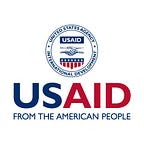Hens, Health and Heart
Three heroines in rural Zimbabwe take the lead to improve the lives of their families and community.
Any given day in Zimbabwe, Evelyn, Tambudzai, and Stella are pretty busy. Life in rural Zimbabwe’s Zaka District can mean hard work for every member of the household. The three women are members of a USAID-funded community nutrition garden. Before this garden was built in 2016, villagers had to rely on outside communities’ gardens or purchase expensive vegetables from the market.
“There is another community garden about 10 kilometers away where we used to help grow vegetables; We had to wake up at 3 a.m. to go work in the garden,” says Tambudzai.
Now, with their local garden, a group of 56 women from the community work to grow okra, tomatoes, carrots, spinach, cabbage and all sorts of other nutritious crops, helping to bolster the diets of their children and providing income from sold crops.
Evelyn smiles as she explains, “We now have some disposable income to spend on other things like school fees. We also have food through the lean season, even without the maize crops. We have chickens as well!”
Stella has a dual role in the community. She works in the community nutrition garden alongside Evelyn and Tambudzai, but also plays an important role as a community health worker. Her interest in helping the community promote healthy and nutritional practices within their households started when she and her child were enrolled in a supplementary feeding activity supported by USAID’s development activity with World Vision. One exercise had Stella play the role of “care group leader”. “I like being a leader,” Stella affirms, “I’m interested in this.”
Stella is educating women and mothers in the community on improved feeding practices, hygiene, nutrition, the preparation of healthy food from the local garden, which is an important source of knowledge. “This is where we learn more about healthy food and it’s a source of healthy food,” says Stella. Her role as a community health worker can be a challenging but rewarding endeavor. She smiles and reflects, “People here in rural areas need time for new ideas.”
Stella is excited about her future. “Right now I’m a village health worker, but looking to the future I’m interested in taking courses with the Ministry of Health and the Red Cross.”
Just a short walk from the community nutrition garden, two men are busy building a small concrete structure. Once completed, this structure will be Tambuzai’s new chicken coop. Both Tambudzai and Evelyn raise poultry, and have worked hard to grow their once-small flocks into a small business. “The dream is to expand our little poultry business to where we can buy incubators.”
Tambudzai is proud of her chickens, and her work raising them has paid off, but she still sets aside time to work in the community nutrition garden. “I won’t stop gardening once the fowl run is up, because it is interrelated. The chicken manure is good for the garden.”
“We want to be distributors and sell the eggs,” explains Tambudzai. Starting with a few chickens, she’s worked hard to turn this enterprise into a means for providing for her household; the poultry and eggs also help to diversify the household diet and improve nutrition. Evelyn chimes in, “We’ve gained a lot of knowledge because of USAID. With our poultry production we’re now more self-reliant.”
It’s a sunny day in October, with not a rain cloud in sight, but the community’s weir dam — completed in 2016 with help from USAID and World Vision — still holds a bountiful stock of water, despite the rainy season still being weeks away. The dam, which irrigates the nutrition garden and waters local cattle, has helped Evelyn’s community and her household.
“With the dam, USAID has guaranteed longevity. Before, the area was dry, but we have water now, food now, and better nutrition,” shares Evelyn, a member of the dam’s management committee. She’s one of the community members tasked with organizing dam maintenance and rules (no bathing or playing in the water, even on a hot day like this).
Before the dam provided year round water, the women of the community would have to walk their cattle over eight kilometers to the next closest water source, exposing both the women and cattle to all sorts of risks on the road. Now that the community has a year-long source of water, Evelyn says “the livestock are doing better. Two reasons; they have time to rest and they can graze more.” The more water that cows have access to, the more they can graze, helping to increase their potential value on the market and benefiting their health if they calve.
Evelyn, Stella, and Tambudzai are working hard to improve their lives and the lives of their households. It can be a challenging task, as the rains fall later in the year and the price of nutritious food increases. But, USAID, in partnership with World Vision, is working alongside these women to support them and give their community the means to improve resilience.
“These projects came to us as a blessing,” Evelyn celebrates. “Now we have direction on how to improve our lives, because of World Vision and USAID.”
About the Author
Andy Hall is an Information Officer supporting USAID’s Office for Food for Peace. Learn more about our work in Zimbabwe and follow Food for Peace on Twitter @USAIDFFP.
